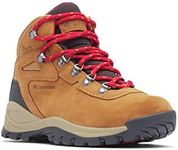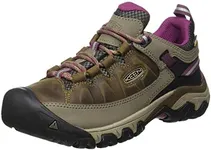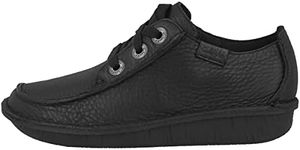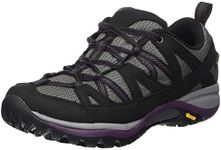Buying Guide for the Best Walking Shoes Women
Choosing the right walking shoes is crucial for comfort, support, and overall foot health. The right pair can make a significant difference in your walking experience, whether you're taking a casual stroll, power walking, or embarking on long-distance walks. When selecting walking shoes, consider the following key specifications to ensure you find the best fit for your needs.FitFit is the most important factor when choosing walking shoes. A proper fit ensures that your feet are comfortable and well-supported, reducing the risk of blisters, calluses, and other foot problems. To find the right fit, make sure there is enough room in the toe box for your toes to move freely, but not so much that your foot slides around. The heel should fit snugly without slipping. It's best to try on shoes at the end of the day when your feet are slightly swollen to get the most accurate fit.
Arch SupportArch support is crucial for maintaining proper foot alignment and preventing pain in the feet, ankles, knees, and lower back. Walking shoes come with different levels of arch support: low, medium, and high. If you have flat feet, you may need shoes with low arch support or custom orthotics. Those with normal arches typically do well with medium support, while high arches may require shoes with high arch support to distribute pressure evenly.
CushioningCushioning in walking shoes helps absorb shock and reduce the impact on your joints. The amount of cushioning you need depends on your walking style and the surfaces you walk on. For casual walks on even surfaces, moderate cushioning is usually sufficient. If you walk long distances or on harder surfaces, you might prefer shoes with extra cushioning to provide additional comfort and protection.
WeightThe weight of the shoe can affect your walking experience. Lighter shoes are generally more comfortable for long walks as they reduce fatigue and allow for a more natural stride. However, if you need more support or cushioning, slightly heavier shoes might be necessary. Consider your walking habits and choose a weight that balances comfort and support.
BreathabilityBreathability is important to keep your feet cool and dry, especially during long walks or in warm weather. Shoes made with mesh or other breathable materials allow air to circulate, preventing excessive sweating and reducing the risk of blisters and fungal infections. If you tend to walk in hot conditions or have sweaty feet, prioritize shoes with good breathability.
DurabilityDurability ensures that your walking shoes will last through many miles of use. Look for shoes made with high-quality materials and solid construction. The outsole should be made of durable rubber to withstand wear and tear, while the upper should be sturdy yet flexible. If you walk frequently or on rough terrain, investing in durable shoes will save you money in the long run.
TractionTraction is essential for maintaining stability and preventing slips, especially on wet or uneven surfaces. The outsole of the shoe should have a good tread pattern that provides grip and stability. If you walk on a variety of surfaces, look for shoes with versatile traction that can handle different conditions. For those who walk primarily on smooth, even surfaces, less aggressive tread patterns may be sufficient.
















